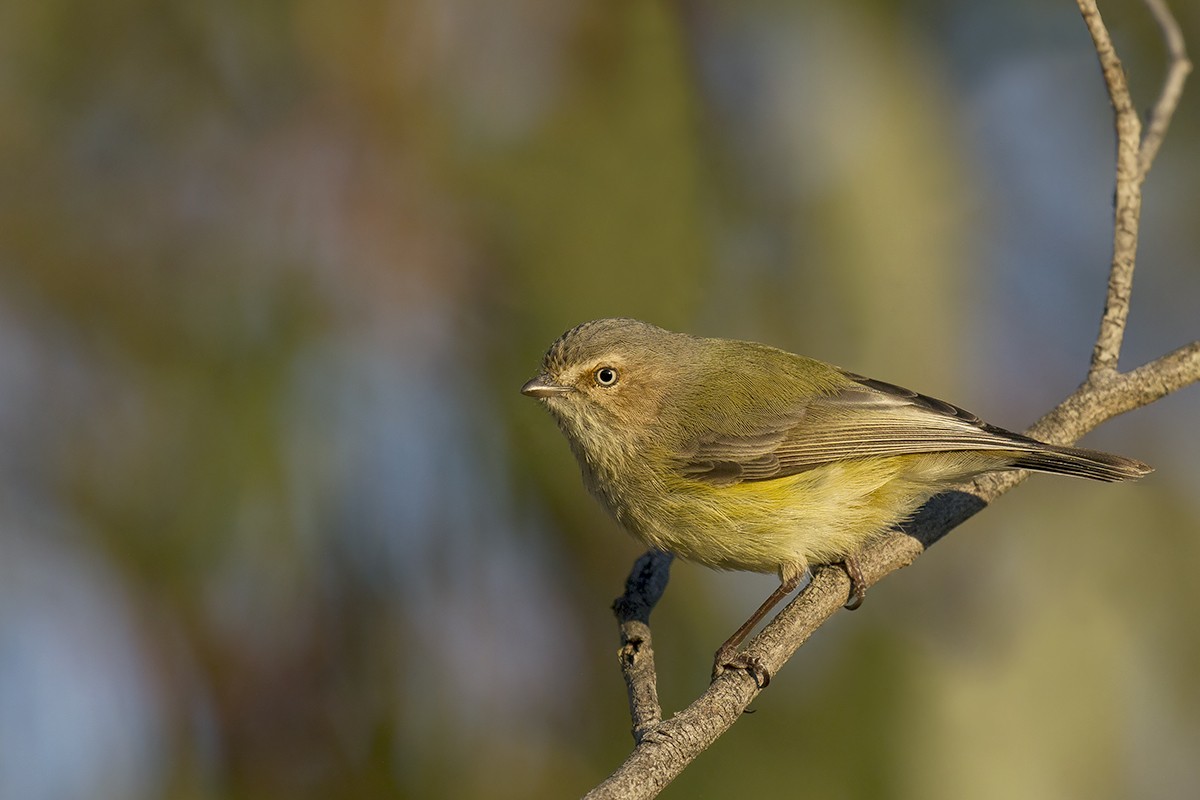Weebill
A species of Weebill Scientific name : Smicrornis brevirostris Genus : Weebill
Weebill, A species of Weebill
Botanical name: Smicrornis brevirostris
Genus: Weebill
Content
Description General Info
Description
The weebill is Australia's smallest bird at approximately 8 to 9 cm (3.1 to 3.5 in) long and weighing an average of 6 grams (adult bird). Wingspan is approximately 15 cm (5.9 in). Weebills have inconspicuously coloured plumage ranging from yellowish-grey (front) to olive-brownish-grey (back). The two main feather pigments involved in this variation are yellow (phaeomelanin) and olive-brown (eumelanin). There is geographical variation in plumage across the four subspecies. Adults have pale yellow eyes and a faint cream coloured supercilium. The throat feathers are grey, often with striation, and the flight feathers on the wings are pale brown. The tail feathers are brown with a black bar and white spot on the tip of all the rectrices, except the central pairs, which are completely dark. Both sexes are monomorphic in plumage colouration. The bill is short and pale grey. The stubby bill of the weebill assists in distinguishing it from thornbills. The legs and feet of the weebill are grey, and like all passerines, their toe arrangement is anisodactyl for perching. Juveniles have a similar plumage to adults, but can be identified by a brighter, yellow bill and greyer eye. Four subspecies of weebill are currently recognised and exhibit slight variation in feather pigmentation, dependent on distribution. In the south and east of Australia, subspecies occidentalis and brevirostris are light brown; in the southwest, the subspecies occidentalis exhibits greyer plumage; while subspecies flavescens in northern and inland Australia is paler and more yellow. Additionally, the Northern Australian weebills are smaller than those in the south. The voice of the weebill is a loud, clear, musical "pee-pee p'wee", "wee bit" or "wee willy weetee", often heard from a considerable distance. 
Size
10 cm
Nest Placement
Shrub
Feeding Habits
Weebill's diet primarily consists of insects and larvae, with occasional seeds. They forage in pairs or groups, actively gleaning prey like spiders, beetles, and flies from tree foliage, demonstrating a preference for canopy and midstory feeding.
Habitat
Weebill mainly settles in dry, open eucalyptus forests and woodlands, including mallee and mulga areas. They notably gravitate towards semi-arid regions, occasionally adapting to arid zones near water sources. These birds forage in the canopy of eucalyptus trees and are also seen in acacia shrublands and riparian woodlands, steering clear of dense rainforests and monsoon forests.
Dite type
Insectivorous
General Info
Feeding Habits
Bird food type
Distribution Area
The weebill is found in woodlands and forests across most of mainland Australia, excluding Tasmania. All four subspecies of weebills are sedentary in their range, and numbers are regular throughout the year. They are most commonly found in the canopies of dry, open eucalyptus forests, woodlands and mallee, occasionally coming down to the midstory to feed primarily on small insects and their larvae. They display a preference for foraging in the canopy foliage of healthy eucalyptus trees, where they are more likely to retrieve insects. The weebill is widespread in all climates, although localised to watercourses in arid zones. They are somewhat gregarious with other small insectivorous passerines, such as thornbills, silvereyes, and pardalotes. 
Species Status
Widespread and common in its habitat throughout its range on mainland Australia, the weebill is evaluated as Least Concern on the IUCN Red List of Threatened Species. However, like many woodland birds throughout Australia, local declines have been noted, these being consequent upon habitat loss and fragmentation caused by deforestation of Eucalyptus woodlands and other anthropogenic changes to the characteristics of the land. Human-caused disturbances include introduced flora and fauna species, and altered fire regimes that can result in changes to ecosystem-level processes, modify habitat structure and consequently affect fauna assemblages. 
Scientific Classification
Phylum
Chordates Class
Birds Order
Perching birds Family
Australasian warblers Genus
Weebill Species
Weebill 